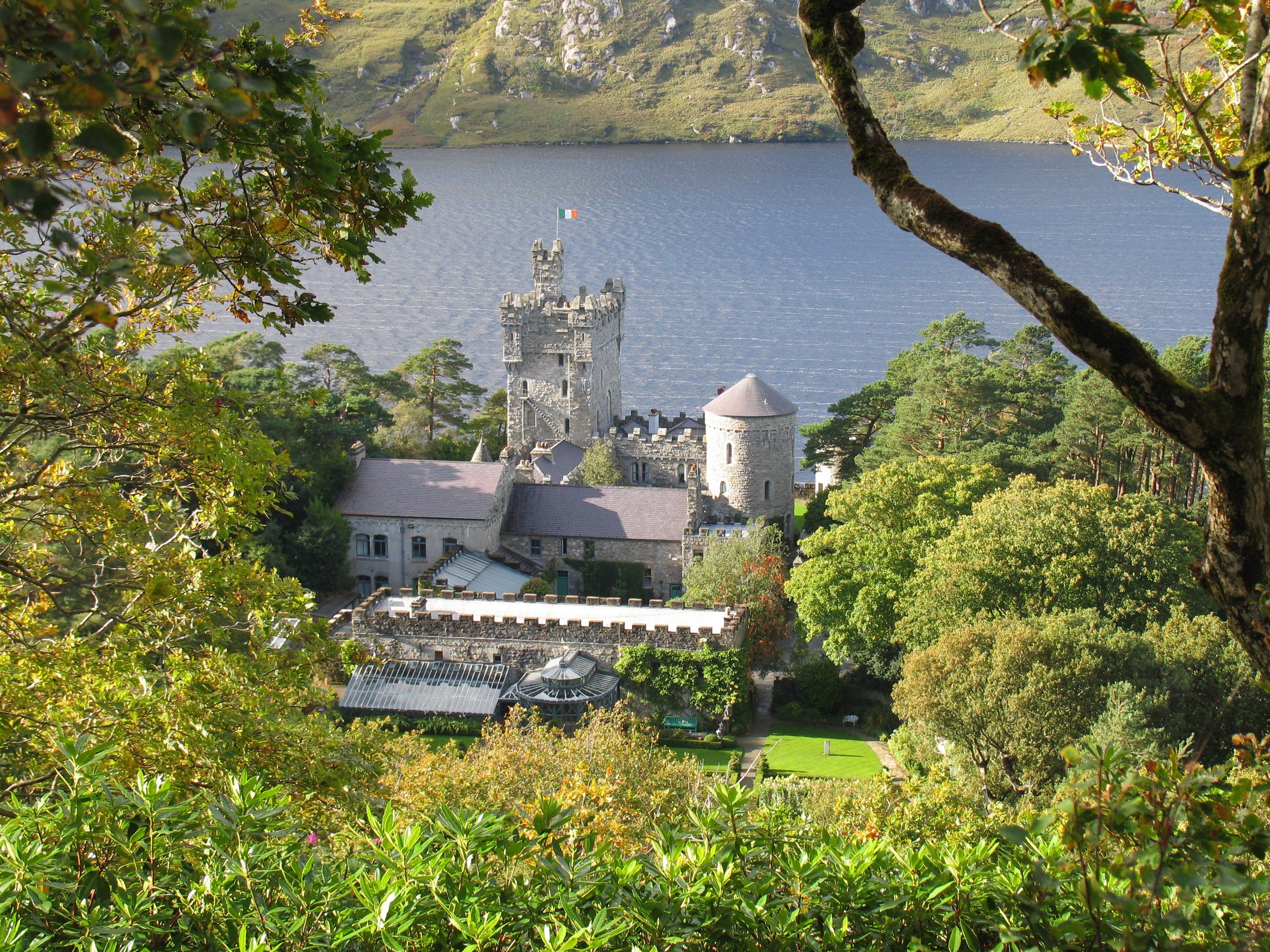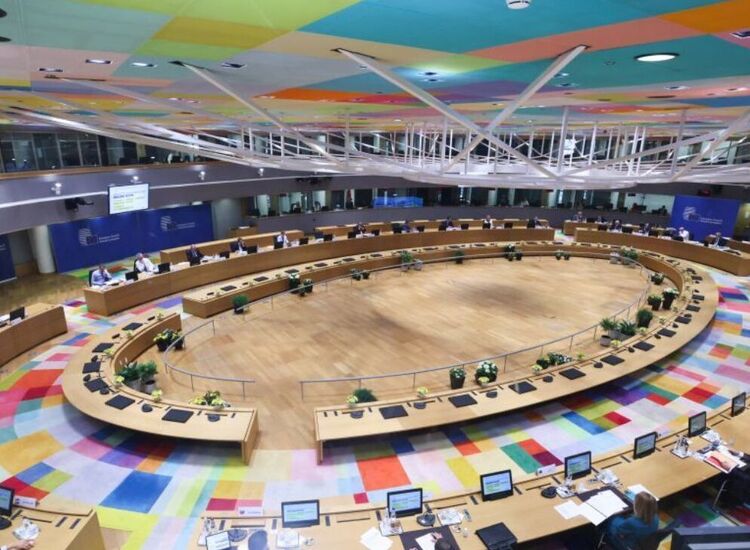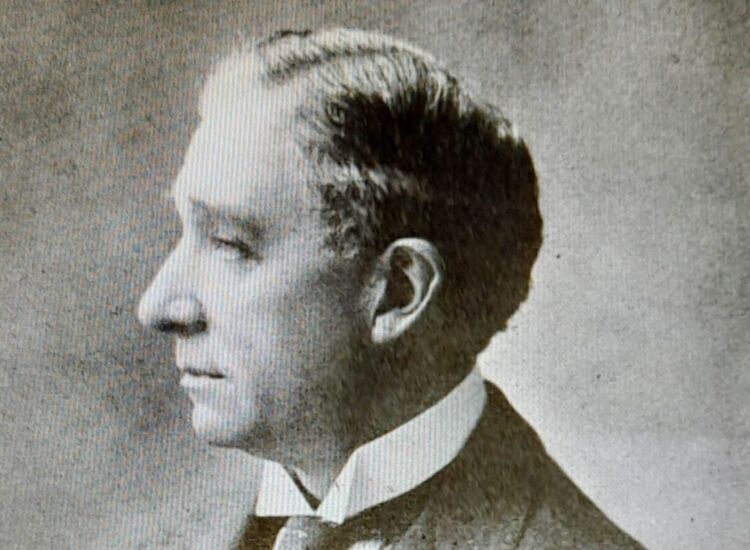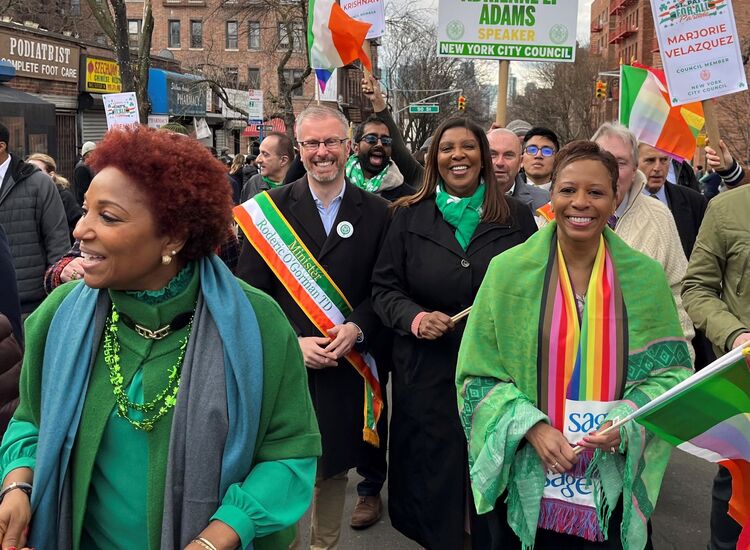Located in Donegal, Ireland’s “forgotten county,” Glenveagh National Park, which covers over a 170 square kilometers, is a rare gem offering stunning views of Mount Errigal and the Derryveagh Mountains. A hiker’s paradise, visitors are stunned by the beauty of Lough Veagh and the poisoned Glen. Glenveagh is also home to the largest herd of red deer in Ireland and in 2000 golden eagles were reintroduced into the park, yet all this beauty hides a dark past, one with many American connections.
Visitors who do not know the park’s history might wonder how such a large expanse can be devoid of people. The natives who once inhabited the lands of the park were evicted in a bitter incident still recalled by locals, known as the Derryveagh Evictions. The evictions were the work of the man who created Glenveagh, “Black Jack” Adair, whose name is still infamous to locals.
John George Adair was born in 1823 in “Queen’s County,” now County Laois, into a wealthy Anglo-Irish family who had been landlords in Ireland since the 17th century when John’s ancestor Colonel Robert Adair was rewarded with an estate by King William of Orange for his service at the Battle of the Boyne. His father had inherited sugar plantations in the West Indies, which funded a comfortable lifestyle.
Around 1850, Jack Adair headed for New York where he made a lot of money speculating in real estate. Flush with this cash, he visited Donegal in 1857 and was immediately taken by its beauty. He began buying land and soon he had amassed an estate of about 30,000 acres. He called his estate Glenveagh after the Irish name for the general area, which translates as “glen of the birches. “ It was also the home of Irish-speaking communities living in townlands such as Altnadogue, Bingorms and Claggan.
Adair had a vision for his estate, but tenants formed no part of it. He envisioned the future of the estate as a hunting lodge and sheep farm and he began to have trouble with the tenants whom he considered to be merely obstacles to his development plans. Adair wanted to build a hunting lodge for shooting parties. He arranged a fowl shoot across the land for which he did not have sporting rights. This angered his tenants, who feared their crops would be damaged and their livestock disturbed. They set out to sabotage Adair’s hunt by beating the bushes to frighten the fowl away. They also formed a circle around him wherever he went, hindering his ability to hunt. Infuriated by what he considered their impertinence and their audacity in defying him, Adair was said to have threatened the tenants with his gun and warned them that they would pay dearly for their actions. Adair hired two men to move the sheep onto the estate, and when one of them was murdered possibly by Adair’s tenants, The killer was never discovered but Adair blamed the tenants.
On St. Patrick’s Day in 1861, Adair began his infamous evictions. Adair obtained a writ granting him the right to evict his tenants and take back possession of his land. With this in hand, he gathered a group of 203 police officers along with 10 “crowbar men”, and sent them off to execute it. The posse went from house to house, demolishing or making uninhabitable 46 dwellings in all. Overnight, 244 men, women and terrified children were evicted from their homes and left to wander the roads seeking shelter wherever they could. Many of the evicted ended up in America or Australia.
After he cleared off his tenants, Adair began to build a castle. Built between 1867 and 1873, Glenveagh Castle, designed by John Townsend Trench, is modeled on early Irish tower houses and built using local granite. The castle’s remote mountain setting was inspired by romantic Victorian images of the Middle Ages. Though the castle’s exterior looked ancient, it boasted a thoroughly modern interior, which he decorated with sculptures both new and old, including sphinxes, figures of Greek Gods, busts in the Tunisian style, and even two temple guardians taken from distant Bali. Adair planned out French and Italian gardens with amazing views of the lake.
In 1869, Adair met Cornelia Ritchie, a widow from a prominent Philadelphia family, and married her. Together they set about the creation of the Gardens and Castle. Adair's ambition was to create an estate and castle that surpassed Balmoral, Queen Victoria's Scottish retreat.
Cornelia turned the remote Glenveagh Castle from a rustic hunting lodge to a cozy socialite’s resort. She imported hundreds of tons of soil to make a lawn, started a kitchen garden, and planted the Scots Pine and Rhododendron shelter belts. In 1915, Belgian refugees displaced by the World War built the Belgian Walk. Cornelia even brought in exotic plants to further develop her new gardens. Over the next 30 years, she became a much-noted society hostess and continued to summer at the castle until 1916.
Glenveagh was purchased by a Harvard professor, Arthur Kingsley Porter, who was studying Irish archeology and culture. He brought many important Irish cultural figures to the castle but he disappeared in 1933 while visiting Inishbofin island off the coast of Connemara. His student, Henry McIlhenny purchased Glenveagh from Porter’s widow in 1937 having rented the Castle with his mother for a holiday in 1934. For McIlhenny, it was a return to his ancestral roots. His grandfather was a Donegal man who had patented a gas meter that made his family rich. McIlhenny fell in love with the estate and brought many famous Americans including Gretta Garbo, John Wayne, and Marilyn Monroe to the estate. McIlhenny wanted to plant a stunning garden at Glenveagh and luckily his Harvard classmate Lanning Roper was one of America’s most celebrated horticulturists who had also designed several other gardens around Ireland. Roper created astonishingly beautiful pleasure gardens.
In the 1970s, with the outbreak of the Troubles in Northern Ireland, McIlhenny’s friends were reluctant to come to Glenveagh. Worried about the possibility of being kidnapped by the IRA, he entered into discussions with the Irish government about donating the estate to create the Glenveagh National Park, which happened in 1975, with McIlhenny retaining ownership of the castle and the gardens. He visited occasionally over the next few years, but in 1983, by now in his 70s and struggling to pay the bills, he gave the castle, its contents, and the gardens to the Irish state and left for good. He died in 1986. It is said that he gave Glenveagh to the people of Ireland to make amends for the evictions of more than a century before.
Today, visitors can marvel at the contrasting views of the park’s rugged wilderness and the elegant formality of the gardens Cornelia Adair and Lanning Roper so carefully created.








